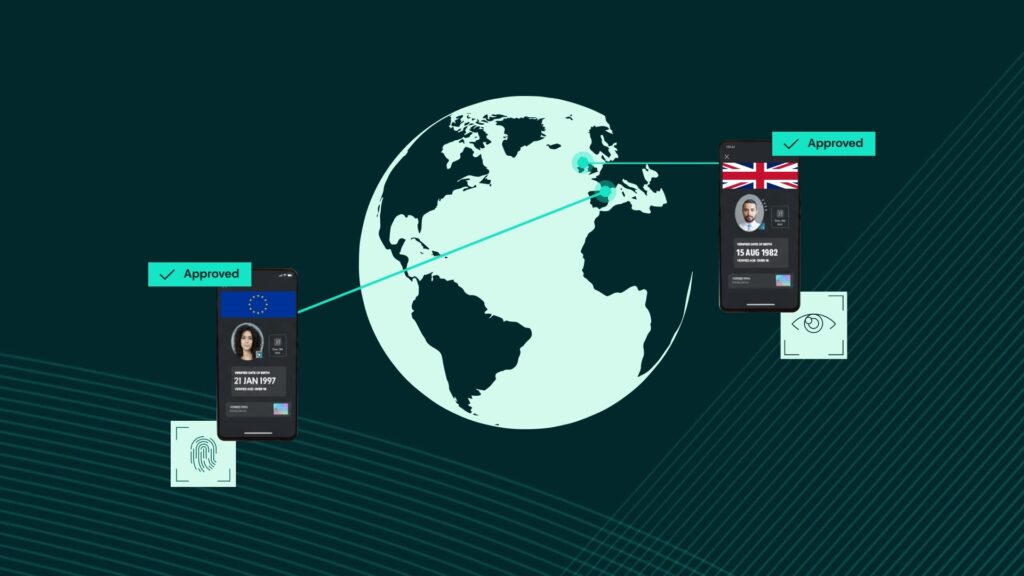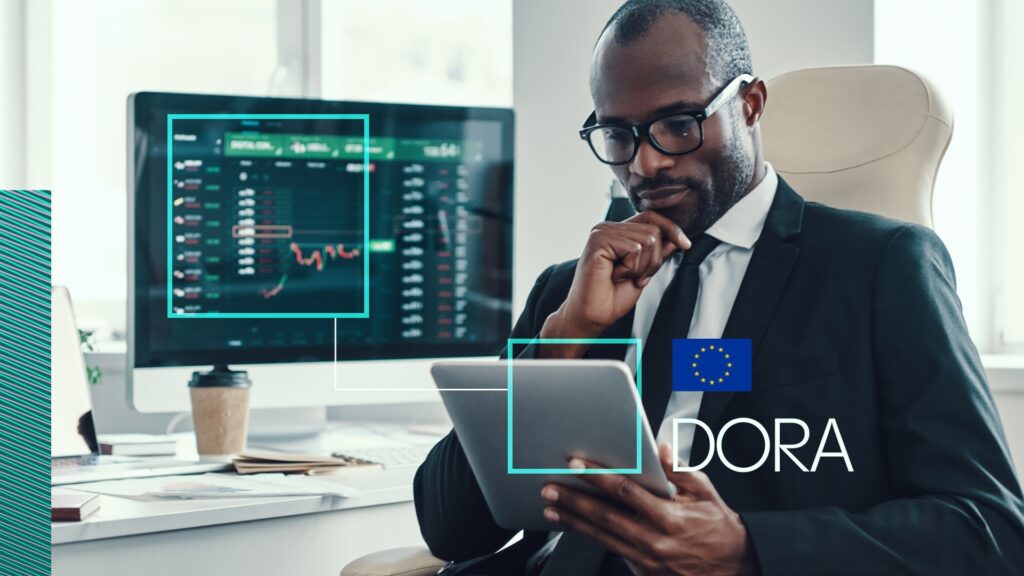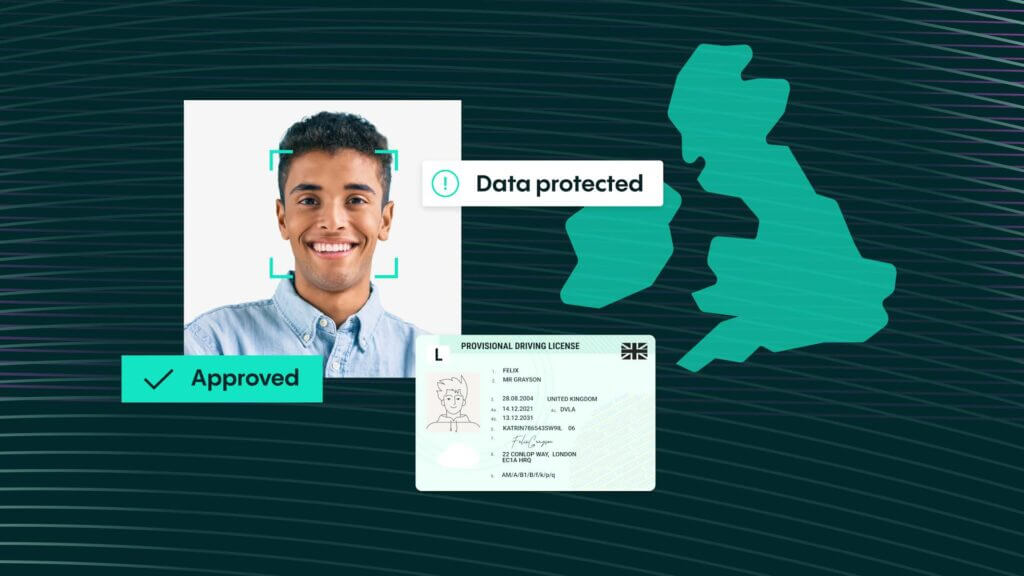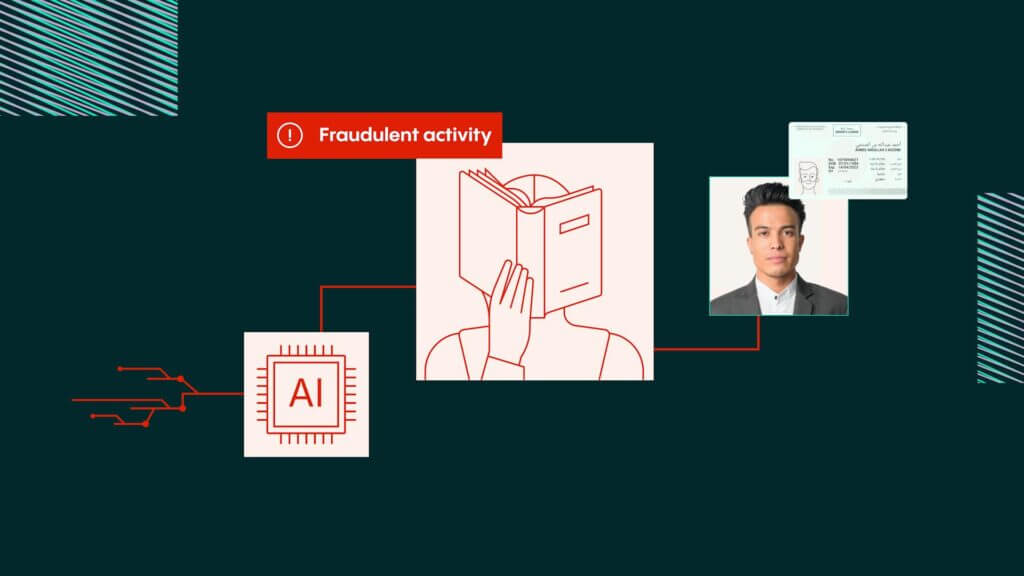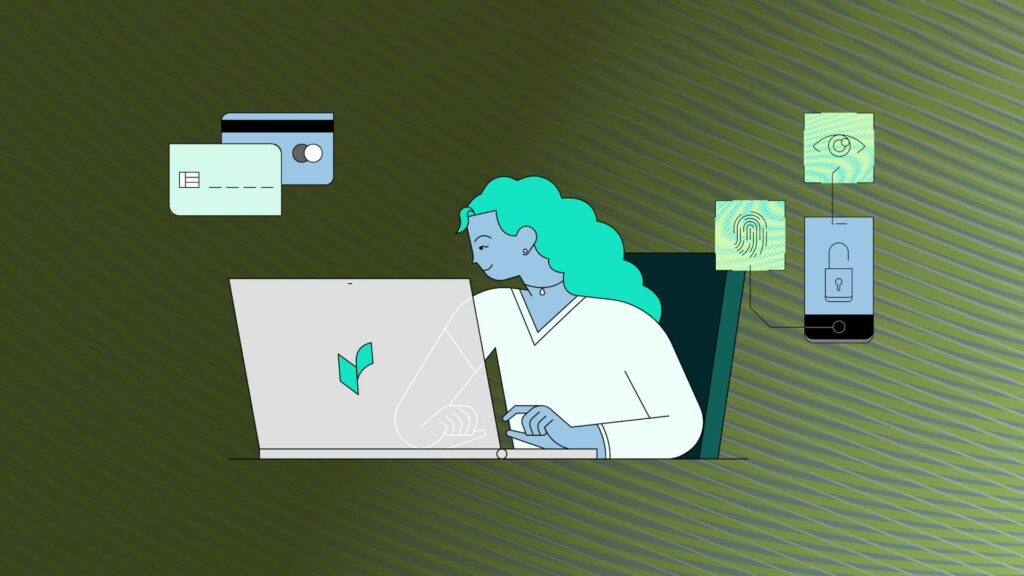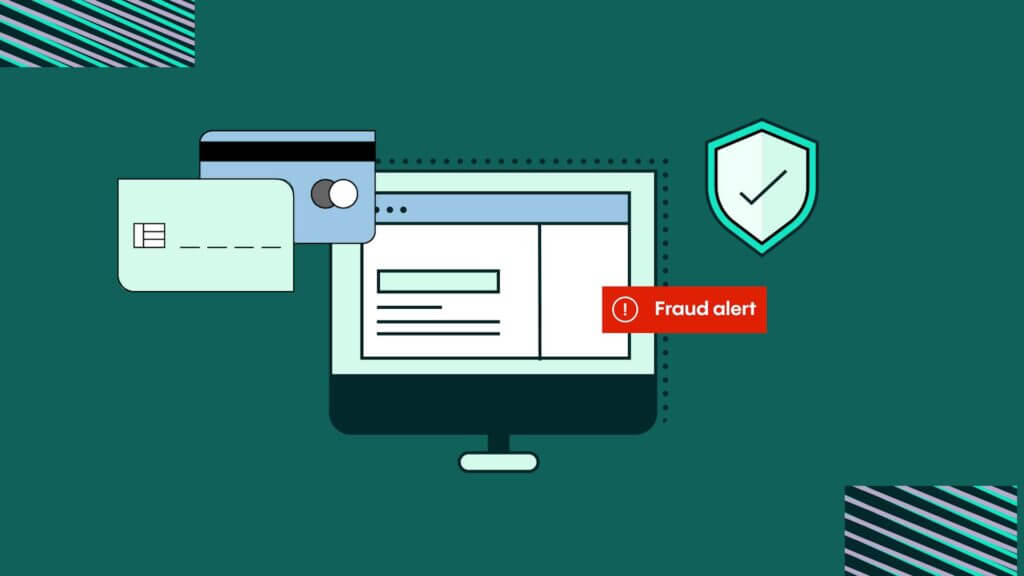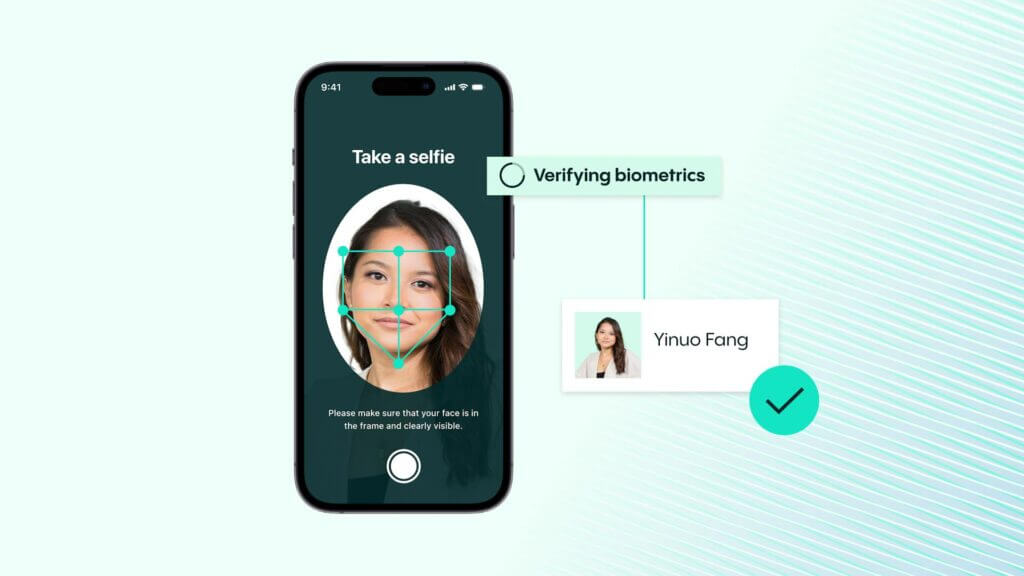IDV Article
Biometric Authentication: Enhancing digital security and compliance management
Biometric Authentication isn’t just for security but can also aid in compliance management by ensuring regulatory adherence with user verification requirements and addressing related issues.
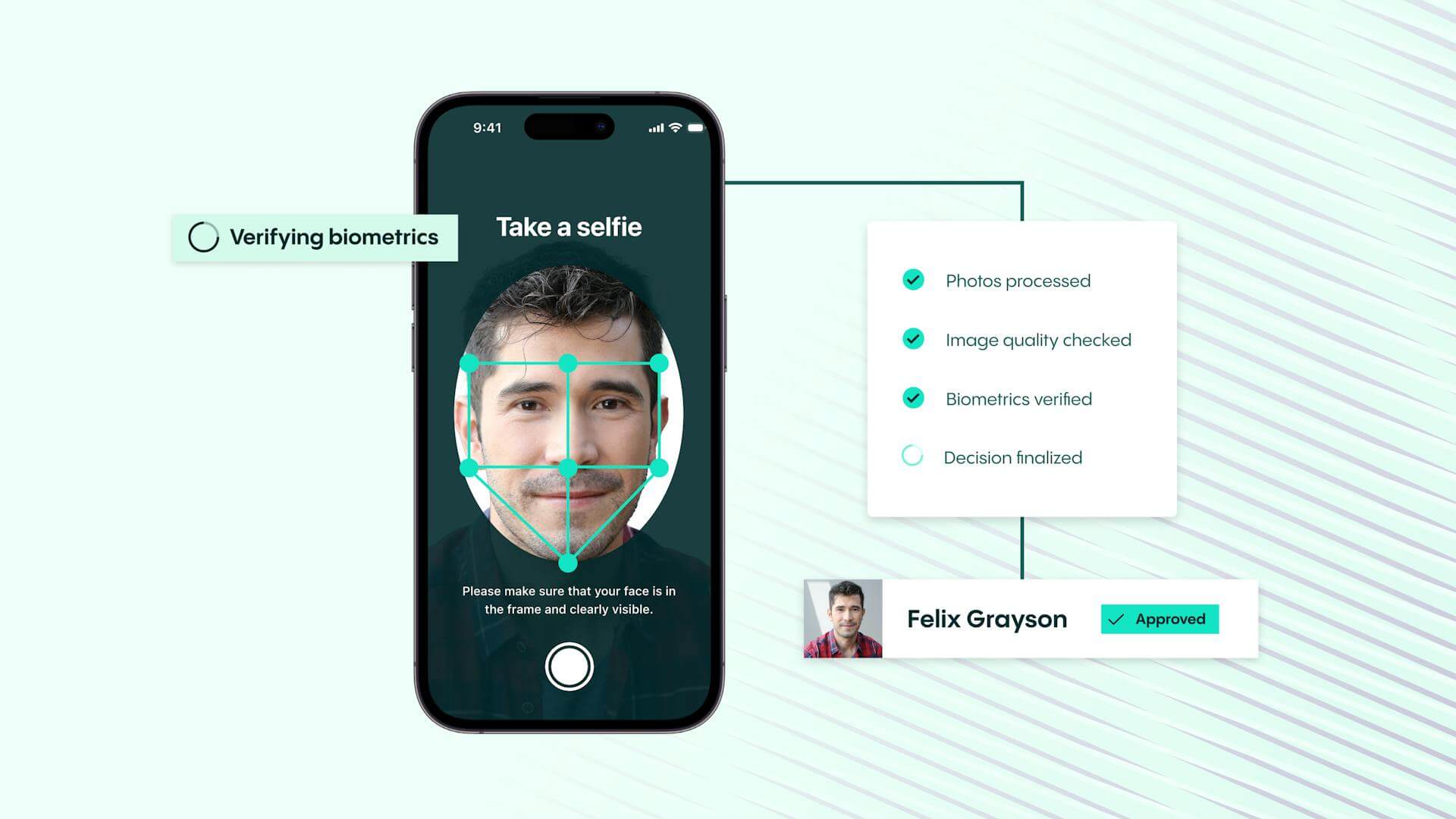
In today’s digital era, organizations face the dual challenge of securing online transactions while meeting stringent compliance requirements. Biometric Authentication offers a powerful solution for strengthening security, mitigating online threats, and enabling compliance with regulatory requirements.
Veriff’s Biometric Authentication matches facial biometrics from a simple selfie against a stored facial biometrics template to confirm that a returning user is who they claim to be. Powered with passive liveness detection and fraud prevention checks, it ensures that the user is real and genuine. For users, it offers an instant, convenient, and secure way to access goods and services, while businesses benefit from an added layer of security that also enables compliance with regulatory requirements, such as age-gating and age-verification regulations.
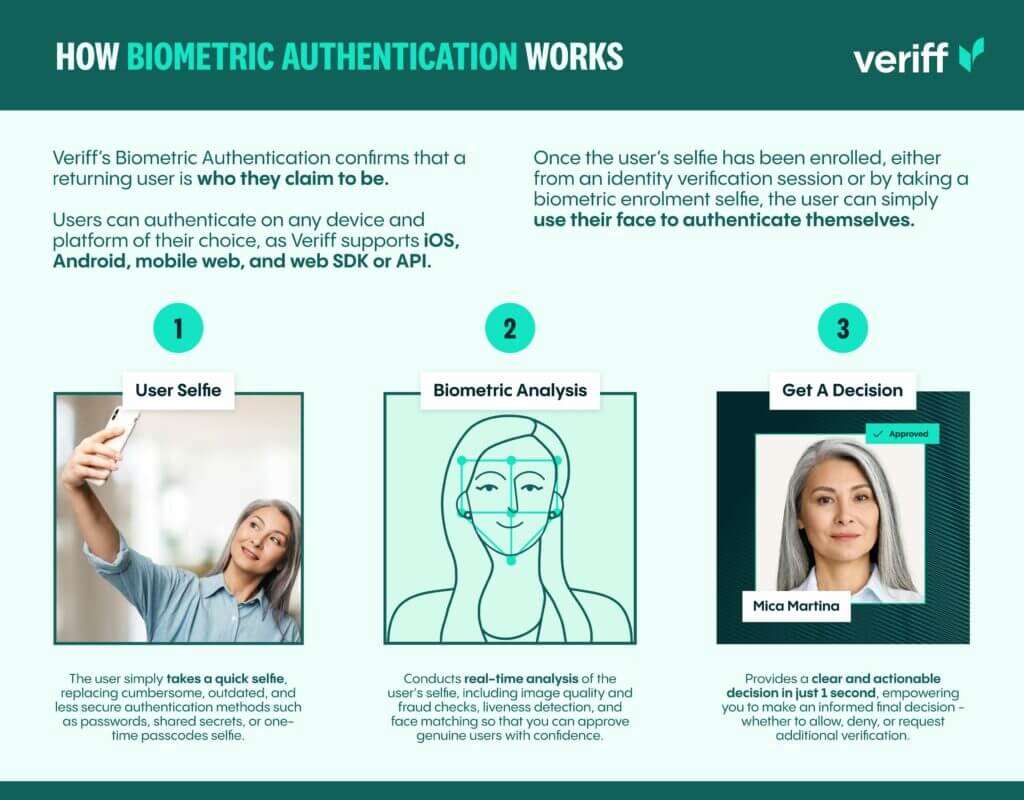
Biometric Authentication for enhanced security
Combating online threats with Biometric Authentication
Online threats such as account takeovers, fraud, data leakage, unauthorized access to products or services, and sensitive information are continuously on the rise. Safeguarding businesses and users from such online threats cannot be achieved as effectively without utilizing Biometric Authentication.
Unlike outdated authentication methods, such as passwords and security questions, or easily compromisable self-declarations and checkbox verifications, Biometric Authentication offers a secure alternative for fast and accurate user authentication based on the user’s facial biometrics. Verizon’s 2024 Data Breach Investigations Report (DBIR) found that in the past decade, stolen credentials have appeared in almost a third (31%) of breaches. Using facial biometrics eliminates the need for vulnerable credentials and practices, as it is dependent on the user’s unique biological traits – facial biometrics. Relying on biometrics is particularly crucial in identity theft or stolen credential cases, where unauthorized individuals might misuse the stolen information to access sensitive resources. Similarly, Biometric Authentication protects businesses from the rising threats of AI and deep fakes, whereas Biometric Authentication is capable of determining whether a genuine human is present in the session.
Seamless balance between security and excellent user experience
Without robust biometric solutions, genuine users are at risk of being denied access to the full range of products and services offered by businesses, because traditional authentication and verification methods are far less effective in distinguishing between genuine and potentially fraudulent users. This can lead to stricter, more cumbersome security measures that frustrate genuine users or result in unwarranted account restrictions, limiting their access and creating a poor user experience.
Finding the right balance between strong security measures and a smooth user experience is essential. And Biometric Authentication makes it simple. Implementing Biometric Authentication strengthens security without compromising user experience. Biometric Authentication is instant, convenient, and seamlessly integrates into the user journey, providing robust security while maintaining a smooth, user-friendly process.
Biometric Authentication offers a secure, automated solution for various stages of the user journey, including account access, resets, high-risk activities, age-gated products or services access, and account recovery. Biometric Authentication ensures that legitimate users can easily and confidently access what they need while deterring unauthorized individuals and mitigating the risk of further harm to genuine user and business. This balance of enhanced security and seamless user experience makes Biometric Authentication a necessary tool for businesses.

Talk to us
Talk to one of Veriff’s compliance experts to see how Biometric Authentication can help your business.
Biometric Authentication as a compliance measure
Biometric Authentication is not merely a security enhancer, but it can form a part of effective compliance management to ensure regulatory compliance with user verification requirements and solve related compliance issues.
Age Verification Regulations
Countries are increasingly introducing legislation to protect minors from accessing harmful online content, such as age verification regulations in the EU and the UKIE and age verification regulations in the United States of America. Online businesses, from social media platforms to streaming services must comply with these evolving requirements to meet their legal obligations. To avoid fines, reputational damage, and other legal consequences, it is crucial for businesses to adopt user verification technologies that are user-friendly and ensure only adults can access restricted content. Using robust measures like Biometric Authentication ensures that returning users are the same individuals whose age was previously verified (e.g. using Veriff’s Age Validation or Age Estimation solutions), maintaining compliance and security.
Biometric Authentication is also valuable for other recurring use cases across various sectors:
- Mobility: In the mobility sector, it can confirm the identity of drivers ensuring they have the right to operate the vehicle, enhancing safety and compliance with driving regulations.
- EdTech: In the education technology sector, Biometric Authentication can verify that the correct individual is taking an exam, maintaining the integrity of online assessments and remote exams.
- eCommerce: In eCommerce, it can ensure that the authorized person is accepting the delivery of goods, particularly for age-restricted items, ensuring compliance with legal requirements and preventing unauthorized access.
- Financial Services: In Financial Services, it can be used to authorize high-risk or high-value transfers and genuine account access.
Hence, Biometric Authentication can form a part of a compliance management program, which enables businesses to meet regulatory requirements and enhance security across diverse industries.

Biometric Authentication is not merely a security enhancer, but it can form a part of effective compliance management to ensure regulatory compliance with user verification requirements and solve related compliance issues.
Benefits to genuine users and identity theft victims
In addition to offering seamless and accessible authentication method to users, Biometric Authentication plays a pivotal role in building trust between business and users, assuring them that their accounts are secure and can only be accessed by them with their facial biometrics.
By amping up businesses’ security practices, Biometric Authentication also protects individuals who have been victims of identity theft by implementing stringent fraud prevention measures that prevent misuse of their data for unauthorized access to products and services. This way Biometric Authentication helps to minimize immediate risks of identity loss and further harm (such as financial damage) to the individual and business, reasserting confidence in security of online businesses.
Implications of Biometric Authentication for compliance
It is established that Biometric Authentication is a valuable tool for enhancing business processes and security, but whenever a tool involves personal data processing, such as facial biometrics, the legal implications must be carefully considered. Key considerations to ensure compliance include:
- Legal basis: Ensure there is a lawful basis for collecting and processing personal data, including biometric data in line with regulations like GDPR and CCPA.
- Transparency and user rights: Clearly inform users how and for which purposes their personal data will be used, and their rights related to personal data. Ensure users can effectively exercise their rights.
- Retention: Ensure personal data is retained for a determined period of time.
- Privacy impact assessment: Conduct a thorough privacy impact assessment to evaluate the potential risks associated with personal data (including biometric data) processing and to ensure that appropriate safeguards are in place.
- Security measures: Implement robust technical and security measures to protect information from unauthorized access and data breaches.
As a data processor, Veriff is committed to supporting our customers, who act as data controllers, to meet strict compliance requirements. We take extensive measures to ensure our Biometric Authentication service is a trusted and reliable solution for our customers:
- Technical and organizational measures: Our service is certified under ISO/IEC 27001:2022, SOC 2 Type II, and Cyber Essentials, ensuring the highest standards of data security. For a detailed overview of our data protection practices, you can visit our security and compliance page at Trust Center.
- Fixed data retention: The term for holding data is fixed in customer agreements and internal policies. It is never kept indefinitely.
- Risk assessments and a dedicated team: Our Product Legal and Privacy team work with our data protection officer to conduct data protection impact assessments. These allow us to proactively identify and address the risks related to our products and services.
- Product GDPR audit: Our Product Legal and Privacy team conducts a regular data protection audit to analyze Veriff’s service compliance with General Data Protection Regulation (GDPR) which demonstrates that Veriff maintains a high level of data protection compliance with GDPR across its services. Access the audit summary here.
In conclusion, Biometric Authentication is more than just a security measure—it’s a powerful tool that enhances security, ensures compliance, and builds trust in your brand. By integrating it, businesses not only safeguard against fraud but also contribute to making the internet a safer place for everyone.
Please note that Veriff does not provide legal advice. This article is provided for informational purposes only. You should always discuss your privacy and data protection operations or issues with a qualified legal counsel or privacy specialists.

Talk to us
Talk to one of Veriff’s compliance experts to see how Biometric Authentication can help your business.




